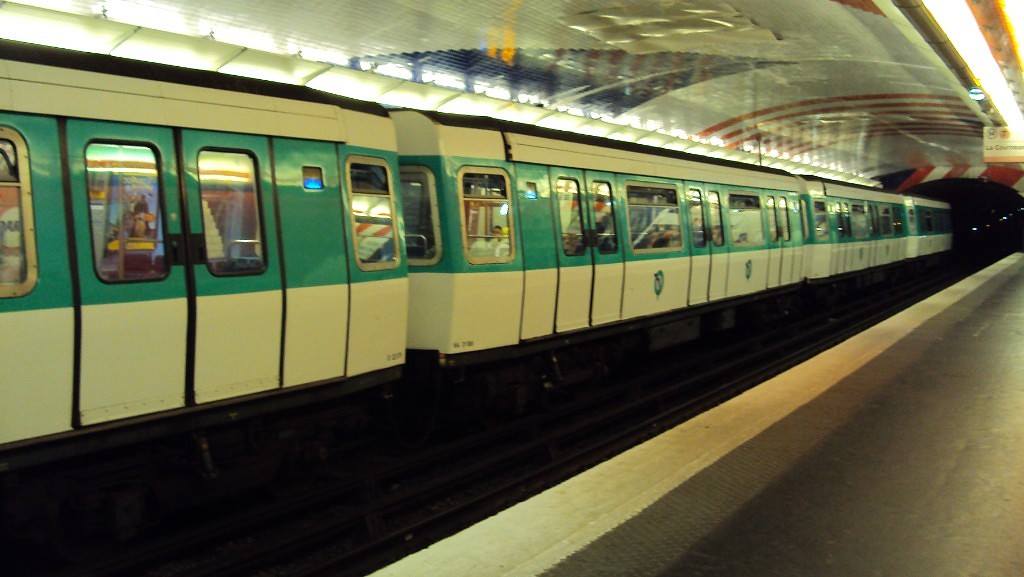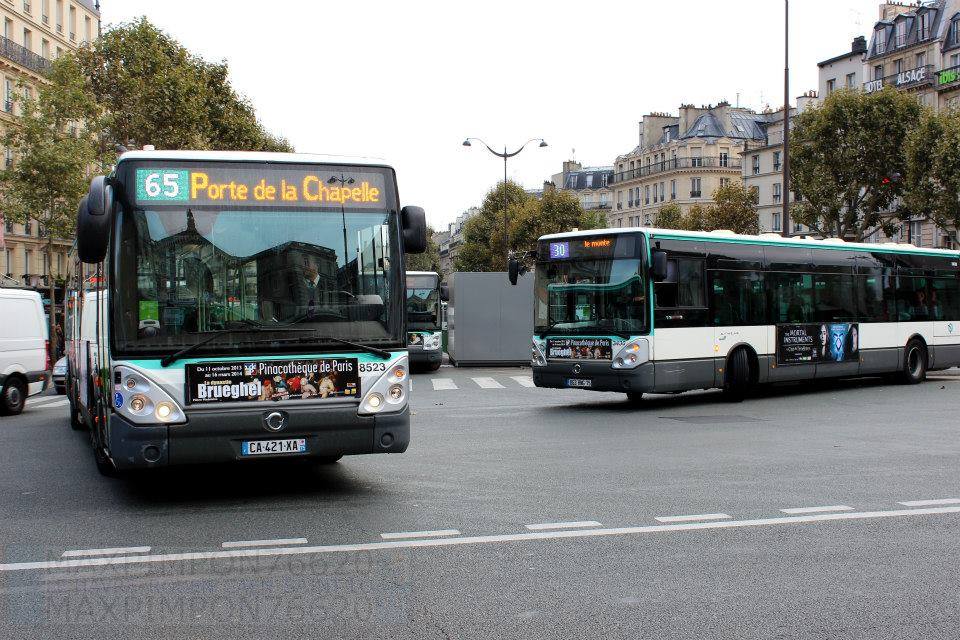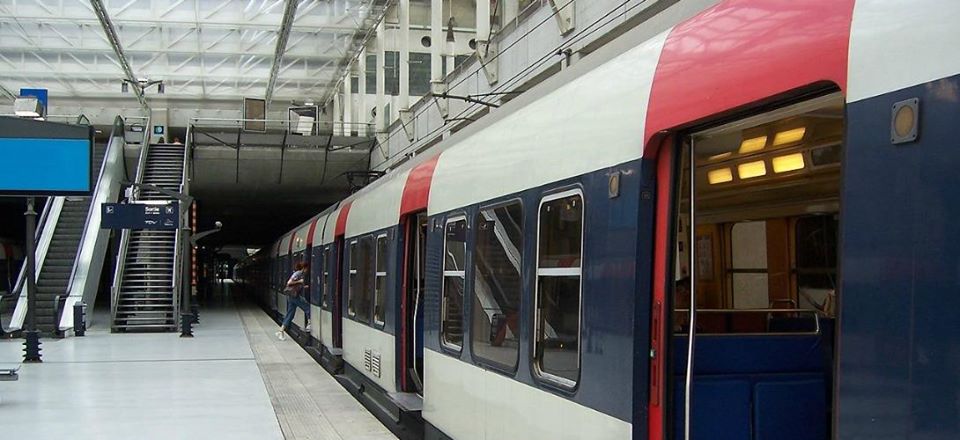How to Use Public Transportation in Paris
You’ll read over and over again on this and other travel guides to Paris that the easiest, cheapest, and most efficient way to get around in Paris is by using public transportation. Most tourists get comfortable using the Paris Metro; however, that’s not the only way to make your way around the French capital.
Here’s an outline of the three forms of public transportation in Paris; including what each one costs, how it works, and when it’s best to use that instead of another method.
Paris Metro
While New York’s subway system still remains something of a mystery to me, I am perfectly at home in the Paris Metro. The tangle of colorful lines on a Metro map looked haphazard to me at first. However, after someone explained the basics of the system, I had the proverbial “lightbulb moment,” where it suddenly became perfectly clear. Here’s hoping you have that “lightbulb moment” with the Paris Metro, too, because it will make your Paris visit much easier.

What Is The Paris Metro?
The word “Metro” is short for “Metropolitan,” and it’s Paris’ subway system. Metro is a common enough moniker for subway networks that you’ll find other cities use the same term.
How Does The Paris Metro Works?
The Paris Metro system has 16 lines running underneath Paris’ streets, crisscrossing the city. Each line has both a number and a color designation, so whether you’re looking at one of the color-coded Paris Metro maps or a sign leading to a Metro station, if you know both the color and the number of the line you’re looking for you’ll be fine.
To determine which direction on a given line you need to go, trace the route all the way to the end and look at the name of that station. That’s the name of the direction you want. In other words, one line – with one number and color – will have two “names,” one for each direction the trains on that line travel.
What Does The Paris Metro Cost?
Tickets for the Paris Metro – called “T+” tickets – cost €1.70 if you buy them individually, or you can buy them in packets of 10 tickets (called a “carnet,” pronounced kar|NAY) for €12.00. They’re actual paper tickets, and each one is valid for 90 minutes once you pass through a Metro turnstile. This means you can change trains as many times as you need to along your route without using a second ticket, as long as the entire trip lasts less than 90 minutes.
When Should You Take The Paris Metro?
The Paris Metro is your best mode of transportation if your hotel or hostel is in the city center (one of the arrondissements 1-20) and there’s a Metro station close enough to where you’re staying that you are comfortable walking back and forth between the Metro and your accommodation at any hour that you plan to be out. If you’re further outside the city center, or there’s a bus stop closer to where you’re staying, then you might want to consider another mode of transportation as well – not to replace the Metro, because it’s likely you’ll still use it to get from attraction to attraction in the city center, but to augment something that’s more convenient to your accommodation’s location.
Paris Bus System
Like any major city, Paris has a network of buses as part of its public transportation system. Because the Paris Metro is so user-friendly and covers the city center so well, most visitors never bother to learn about the buses in Paris; let alone notice they exist. But for some places in the city, buses are your best bet. Sometimes it’s just nice to see where you’re going in the city as you look out the window; instead of popping out of an underground Metro station feeling disoriented.

What The Paris Bus System?
If you’ve ever taken buses in other big cities, you’ll know essentially what to expect from the buses in Paris. There’s nothing particularly unusual about Paris buses, except that they’re far less used by travelers than by locals. Most Paris buses are run by the same company that runs the Paris Metro, RATP.
How Does The Paris Bus System Work
RATP alone operates 59 bus lines in the city center, with 205 more in the suburbs, so you can see how the Paris bus system might be both difficult to figure out and extremely handy at the same time. Maps of the bus network in Paris look much like the Paris Metro maps, with colored lines snaking through the city, and like the Metro lines, each bus line has a number and color designation.
>> Note that buses in the city center have 2-digit numbers, while those that go into the suburbs have 3-digit numbers.
Also, like the Paris Metro, each line has two “names” – one for the terminus at each end – and the name is what you need to pay attention to figure out what direction you’re going. Bus maps aren’t as plentiful in travel guides and in hotel lobbies as Metro maps, so if you plan to travel by bus in Paris, make sure you find a place to pick up a bus map or print one off from the RATP website.
Unlike in some places, buses in Paris won’t automatically stop at every single bus stop unless a stop is requested either by someone on the bus or at the bus stop. If you’re waiting at a bus stop and you see your bus coming (pay attention to the number on the front of the bus!), raise your arm to indicate that you’d like the bus to stop. To get off the bus, press one of the red buttons to indicate that you want to get off at the next stop.
What Does The Bus Cost In Paris
Buses take the same T+ tickets as the Paris Metro. Each ticket costs €1.70 if you buy them individually, or you can buy a 10-ticket pack (a “carnet”) for €12.00. Each ticket is valid for 90 minutes of travel once it’s been validated – so if you ride a bus to a museum and only spend 40 minutes there, you can come back out of the museum and ride the bus back on the same ticket (provided the second trip doesn’t take you over the 90 minutes).
>> Remember to validate your ticket when you board a Paris bus. Validator Machines are located at a few points inside the bus.
When Should You Take The Bus In Paris
The buses in Paris may be your best bet if you’re staying in one of the suburbs of the city instead of the city center, if the closest public transportation to your accommodation is a bus stop rather than a Metro stop, or if you’re going to be out late. The Metro stops running at midnight, while Paris’ night buses – called “Noctilien” – run limited service in certain parts of the city from midnight until 5:30am (when the Metro starts up again).
Paris RER
It’s possible you could descend into an underground station in Paris’ city center, slip a ticket through a turnstile, and ride a train to your destination without realizing you’ve ridden on an RER train instead of a Metro train. Yes, the trains look different, and they ultimately serve a different purpose, but there’s enough overlap that you might ride an RER train now and then without knowing it. There are some routes for which the RER is ideal, however, and you’ll want to pay attention to that.

What Is The RER in Paris
As you might guess from the all-caps writing, RER is an acronym. It stands for the French equivalent of “regional express network,” and that should give you an idea of how RER is different than the Metro. RER trains cover a wider area than the Metro, extending from the city center into the suburbs around Paris as well as Paris Disneyland and the city’s main airports. Think of it as a step between the Metro and the SNCF rail network that covers the entire country of France.
How Does The RER Work?
There are only five lines to the Paris RER network, so it’s much easier to make sense of on a map – but those lines extend well beyond the city center, so it’s a bigger map you’ll be looking at. RER lines are lettered rather than numbered (A through E), and although they’re color-coded on a map, the colors are less important than they can be for buses and the Metro.
As is the case with both the buses and the Metro, knowing the name of the last station on any of the five RER lines will help you figure out the “name” of the direction you want to go. On most Paris Metro maps, you’ll have RER lines listed, too – sometimes they’ll be thicker lines, sometimes you’ll just have to pay attention to whether the line has a number or a letter.
In the city center, you’ll know which Metro stops are also RER stops because the entry signs will say RER and indicate which of the five lines stops there. RER trains aren’t always underground, however, so if you’re outside the city center, be on the lookout for the RER signs without focusing solely on staircases leading underground.
What Does It Cost?
The cost of riding the RER in Paris depends on how far you’re riding the train. If you’re in the city center and the entire journey is within the same area covered by the Metro – zones 1-2 – then the RER costs exactly the same amount as the Metro. If you go beyond the city center (zones 1-2), however, then you need to buy a different kind of ticket.
The ticket you’ll buy for zones 1-2 is the same as a Paris Metro ticket – it’s a T+ ticket and costs €1.70 for one ticket or €12.00 for a pack of 10 tickets (called a “carnet”). For any other trip beyond zones 1-2, you need to buy a specific ticket for that particular journey, much as you would for a trip on the SNCF French trains, and the price will vary depending on the trip you’re taking. You can buy these tickets at ticket windows in the RER stations, or you can use the automated ticket vending machines – they allow you to choose your language right at the start, so you don’t need to understand French to use them.
In order to get to the RER train platforms, you’ll have to pass your ticket through a turnstile, which validates it. If you’re staying in zones 1-2 and using a T+ ticket, that ticket is good for 90 minutes once it’s been validated. That means you can transfer from train to train as you need to, so long as you don’t leave the station by passing through an exit turnstile, all on one ticket.
When Should You Take The RER?
As mentioned, the RER extends far beyond the Paris city center into the suburbs, making it an excellent option if your home base is outside the city center. It has the advantage over buses that may cover the same area in that trains aren’t impacted by traffic. The RER is also one of the best ways to get from Paris’ airports into Paris (and vice versa), as the RER runs out to both Charles de Gaulle Airport and Orly Airport.
